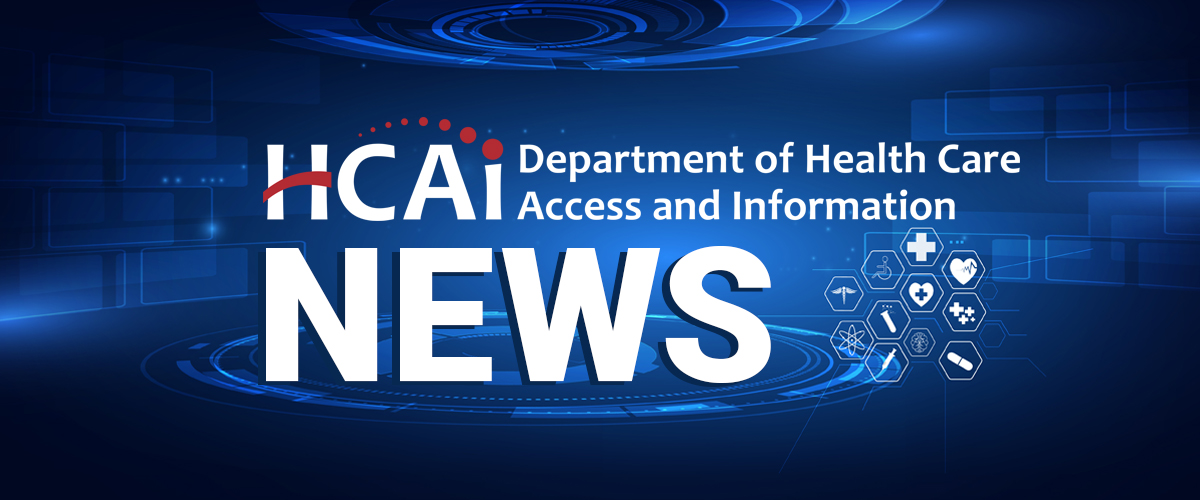WHAT YOU NEED TO KNOW: The latest Health Care Payments Data (HPD) report reveals what the most expensive prescription drugs are for Californians in the commercial market and supports the need for providing access to more affordable generic brands of drugs through the state’s CalRx program.
SACRAMENTO – Today the Department of Health Care Access and Information (HCAI) announced the release of its Healthcare Payments Data (HPD): Fee-For-Service Drug Costs in the Commercial Market Report. This report sheds light on the prohibitive cost of many common prescription drugs. It also enables the State of California to analyze future drug cost trends as the state works to bring down the cost of lifesaving medication.
HCAI’s Office of Health Care Affordability (OHCA) analyzed the data and identified two key points of interest in the HPD report. Both underscore how California’s recent investment in developing its own biosimilar insulin through the CalRx program can make prescription drugs more affordable.
- Almost half of the top 25 costliest prescription drugs are biologics. Increasing access to lower cost biosimilar (i.e., “generic” biologics) versions of these drugs would improve affordability.
- Insulin is a major driver of the cost of drugs. The branded versions of insulin lispro (Humalog) and insulin glargine (Lantus Solostar) are two of the costliest drugs identified in the report.
“The prescription data available in our latest product from the Health Care Payments Data Program are critical in the state’s efforts to rein in health care costs,” said HCAI Director Elizabeth Landsberg. “The findings highlighted by our Office of Health Care Affordability show that making affordable biosimilars of popular prescription drugs lowers costs for consumers. That is why, under the CalRx program, California is working on producing its own biosimilar insulins and investigating other drugs that could be provided at a lower cost through CalRx.”
HCAI, in its work to help reduce health care costs, will use HPD resources to support more drug cost affordability initiatives. As more data in the HPD system becomes available, OHCA will analyze spending trends and variations. With those findings, CalRx can conduct additional analyses to identify potential drug candidates.
Two drugs are already prompting interest from the CalRx program as possible candidates:
- Medications to treat inflammatory conditions, such as rheumatoid arthritis and psoriatic arthritis, are some of the most costly drugs despite the availability of interchangeable biosimilars. This suggests that there are major hurdles to adopting those biosimilars which should be investigated.
- Medications that help lower blood sugar are likely to increase total pharmacy costs in the coming years due to the marketing surge they have recently experienced. This makes this family of medications a strong candidate for monitoring.
The establishment of the HPD Program builds on years of HCAI work advancing healthcare cost transparency, including through the public reporting of Prescription Drug Wholesale Acquisition Cost (WAC) Increase data, one of the only freely available sources of wholesale acquisition cost data in the nation.
WHY THIS MATTERS: No Californian should go into debt to access lifesaving medication. Information yielded by the HPD Program assists policymakers in developing data-driven solutions for making prescription drugs affordable.
OHCA will collect, analyze, and publicly report data on total health care expenditures and enforce spending targets set by OHCA’s Health Care Affordability Board with the goal of generating a more complete analyses of what drives drug costs in California. These insights empower policymakers to pursue informed policies that make prescription drugs affordable.
BIGGER PICTURE: Support for cost transparency data initiatives, such as the HPD, is part of the Newsom Administration’s larger effort to lower the cost of lifesaving drugs and healthcare costs in general. In early 2023, Governor Newsom announced plans to manufacture CalRx-branded insulins available to consumers at no more than $30. And in June 2024, CalRx-branded over-the-counter naloxone nasal spray became available to eligible organizations for free. Making these lifesaving drugs available at below-market prices will save countless lives. With plans for the HPD Program and OHCA to receive more data and to generate more insights on what drives prescription drug costs, California has laid the groundwork for identifying future solutions to market failures and to make much needed drugs affordable.


